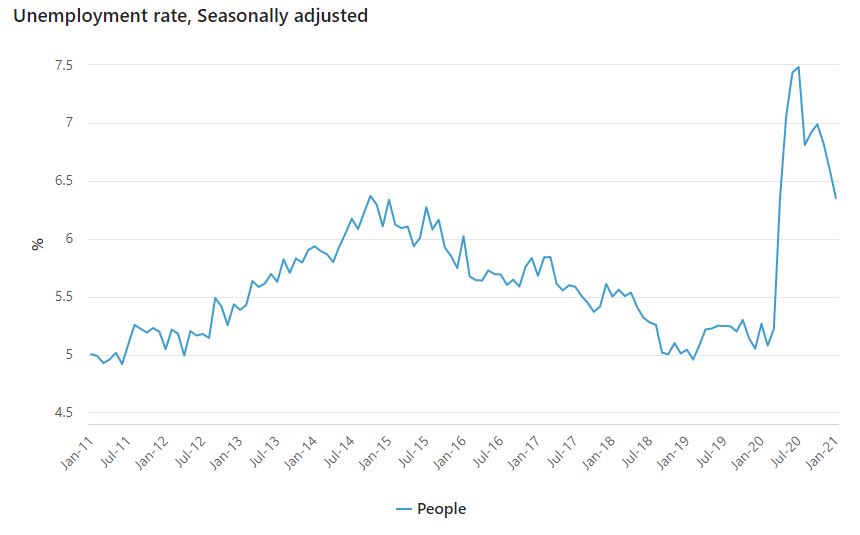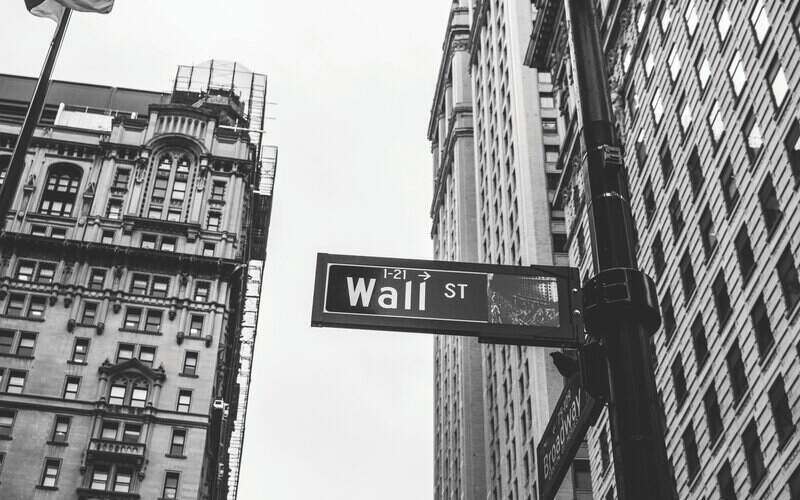The figures from the Australian Bureau of Statistics (ABS) were slightly better than expected, with the market pencilling in a drop to 6.5%.
Seasonally adjusted employment increased by 29,000 people between December and January, while seasonally adjusted unemployment decreased by 34,000 people.
Bjorn Jarvis, head of labour statistics at the ABS, said the latest data showed a continued recovery in the labour market into the new year.
“January 2021 was the fourth consecutive monthly rise in employment, as employment in Victoria continued to recover," Mr Davis said.
"Nationally, employment was only 59,000 people lower than March 2020, having fallen by 872,000 people early in the pandemic.”
Source: ABS
Hours worked dropped by 4.9% over the period, seasonally adjusted, as more people decided to take a break over Christmas and New Year.
"After a tough 2020, more Australians than usual took leave in the first two weeks of January, particularly full-time workers,” Mr Jarvis said.
“This fall in hours worked is different to the falls across April and May 2020, which resulted from the restrictions in the labour market, rather than people taking leave.
"However, the number of employed people who worked zero hours in early January in the capital cities also reflects some ongoing effects of recent lockdowns in Sydney and Melbourne.”
Unemployment only increased in the Australian Capital Territory and South Australia, who saw a 0.7% rise in the rate, leading them to dethrone Queensland as the state with the highest unemployment rate.
Westpac economist Justin Smirk said the New South Wales COVID outbreak had significant impact on the ABS figures.
"Nevertheless, the Northern Beaches lockdown would have had its greatest impact in January and it appears that firms responded with hours, rather than jobs, especially given all the employment gains were full-time," Mr Smirk said.
"Those working zero hours due to annual leave, flexi time etc gained 104% seasonally adjusted in January. In January 2020 this group lifted 16%."
The participation rate declined 0.1 percentage points to 66.1%, remaining close to its record-high seen in December.
Youth unemployment remained steady at 13.9%, while the youth participation rate fell 0.2 percentage points to 68.4%.
Prior to the release of the figures, NAB, who correctly forecast the unemployment result, said government support was likely to have helped the fall in the rate.
"Supporting the case for a strong print was the PM announcing that JobSeeker numbers fell 100k in January, while the JobKeeper program may have kept some people employed who would have normally been seasonally retrenched in the holiday period," NAB economist Ray Attrill said.
Mr Smirk said the data was likely to reinforce the government position to end JobKeeper in March.
The current momentum is looking good for our assumption that it will provide an offset to the ending of the JobKeeper package in March."
Photo by Anggun Tan on Unsplash




 Denise Raward
Denise Raward

 Harry O'Sullivan
Harry O'Sullivan
 Rachel Horan
Rachel Horan
 William Jolly
William Jolly

